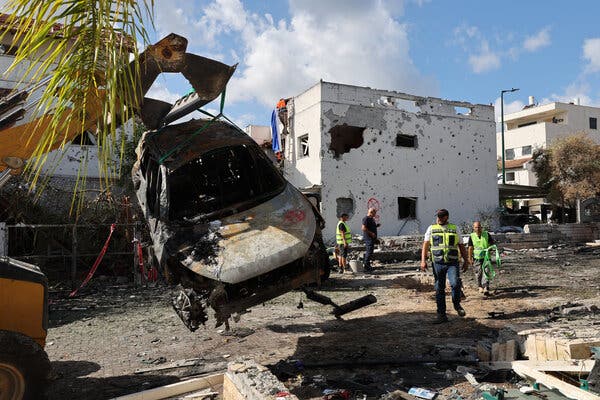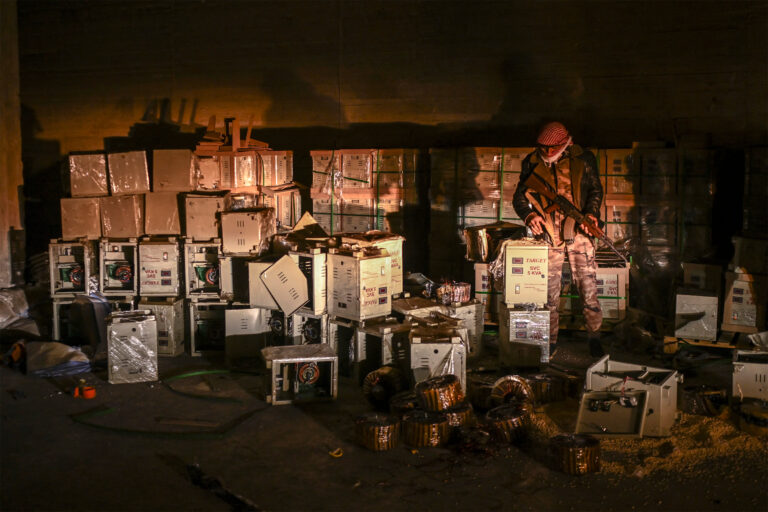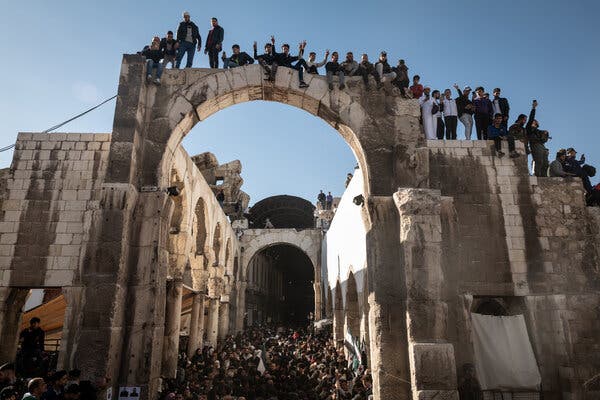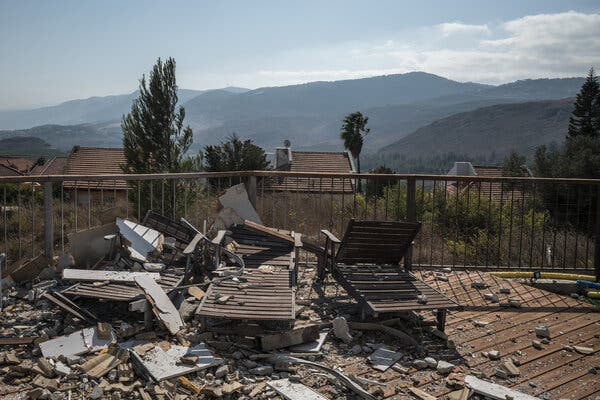Residents of Kiryat Bialik, a community near Haifa, were feeling vulnerable as the back-and-forth attacks escalated recently between Hezbollah and the Israeli military.

Even before Hezbollah launched more than 100 rockets, cruise missiles and drones toward northern Israel on Sunday, people who lived in the area feared they would be targeted.
Most of the projectiles launched overnight were intercepted by Israel’s missile defense. But at least one struck a residential neighborhood in the town of Kiryat Bialik early Sunday morning, setting cars on fire, badly damaging a half-dozen houses, shattering windows and widening the area of the country that sees itself as under attack from Hezbollah in Lebanon.
Roughly 45,000 people live in Kiryat Bialik, a community with tangerine trees heavy with fruit in the northern suburbs of Haifa, Israel’s third largest city. Residents there were feeling vulnerable even before Sunday’s strike as the back-and-forth attacks escalated recently between Hezbollah fighters and the Israeli military.
But after Friday’s airstrike by Israel in southern Beirut, which killed several senior Hezbollah commanders, it seemed only a matter of time before their town was struck, said several people.
“I had a bad feeling that the next step would be rocket fire deeper than what we have seen up until now,” said Yana Klibaner, 40, a tourism adviser, who lives on the street where the missile hit.
Ms. Klibaner lay in bed in the early hours of Sunday morning, listening as explosions came closer. She finally got up “just before the sirens sounded,” she said, and scooped up her two younger children and ran with her older daughter to the bomb shelter in their house.
“Glass shattered all around us and we felt the blast coming from the street,” she said.
Because of the warning sirens, most residents managed to reach underground shelters or safe rooms and only three people required hospital treatment, according to a spokesman for Rambam Hospital in Haifa.
For some residents the attack was a worrying reminder of the 2006 war between Hezbollah and Israel in which Haifa and its suburbs were targeted. During that conflict, 43 civilians in Israel were killed by Hezbollah rocket fire, according to a report by Human Rights Watch based on information from the Israeli police. Thirteen were killed in Haifa alone, and more than 250 people were wounded there.
In Lebanon, more than 1,100 civilians were killed and thousands more wounded by Israeli attacks during the conflict, according to a separate report from Human Rights Watch.
In Kiryat Bialik on Sunday, there was a sense of foreboding but also resignation about the possibility of more strikes.
Some residents, like Ms. Klibaner, the tourism adviser, sounded critical of the government’s approach. “I feel Israel is dragging this out instead of giving its citizens hope and bringing the hostages back,” she said.
But others, like Malka Barabi, a kindergarten teacher from Kiryat Motzkin, said, “It is time that Israel acts with more power now and the government will have more support from the public because of the ongoing suffering in the northern area, and because living in this condition has become impossible.”
Gabby Sobelman is a reporter and researcher, covering Israeli and Palestinian affairs, based in Rehovot, Israel. More about Gabby Sobelman
Alissa J. Rubin reports on stories across the Middle East, including ongoing conflicts and long-term problems such as climate change. She is based in Paris. More about Alissa J. Rubin



